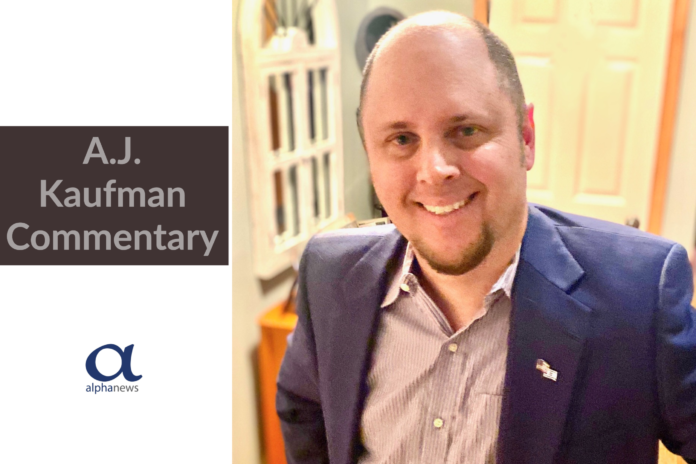“Failure to take on the job of reopening would be not only anti-scientific but also an unacceptable breach of duty.”
— Purdue University President Mitch Daniels
___________________________
The academic year recently concluded across most of America, but the last third was irregular at best and pointless at worst.
In a world where data mattered and goalpost-moving wasn’t accepted, we’d open up most schools in late June or July (it worked at Liberty University and other institutions will follow) to make up lost time; instead glistening new schools shall remain closed for three more months with no end in sight.
Aside from overburdening parents and susceptible grandparents, abrupt school closures have a deleterious impact on children’s emotional, physical and academic well-being. While one-third of Americans currently report symptoms of anxiety or depression, surveys show those under 22 are most forlorn.
Even the paternalistic CDC wasn’t sure about the capricious decision to shut down in-person education, while the WHO’s top scientist admitted children “seem less capable of spreading the virus.”
As a former teacher, this crisis reminds me that schools not only teach indispensable skills but also give parents a needed respite. Today’s distance learning efforts are substandard, with the ongoing disruption creating challenges that especially affect our most vulnerable students.
A Washington Examiner staff editorial this month explained:
“Keeping schools closed exacerbates the achievement gap, as wealthy two-parent families with the ability to work remotely and technological resources to participate in distance learning are at an even more significant advantage.”
We never planned to test forever and stay home until there is a workable vaccine. That’s irresponsible and violates the shelter-in-place bargain we generously made. We cannot entirely rid ourselves of risk, so we’ll adapt, as Americans always do.
Furthermore, it’s going to be harder to get the public to sacrifice and follow protocols if politicians and “experts” frame this as something with no visible ending. Moving forward, private actions and social distancing are more important than government edicts to reduce the spread. Regulations from certain governors often seem more about confrontation and ideology than science.
Let’s look at some real-life examples:
An acquaintance who works as a local university administrator told me, “Campuses thinking they’ll open successfully on-line and not in person will be dead much sooner than later. It doesn’t have to be based on what we know as normal but we need to open up.”
My cousin in Philadelphia has a daughter who just finished an abridged college freshman year.
“She attended classes online and worked diligently but it’s just not the same,” he said. “Online classes can still teach academics but there’s so much young adults miss out on by not being around their peers. We hope she can resume classes at school, the way it was meant to be.”
A colleague in Nebraska, with two children in high school, believes “schools need to return in some form.”
“Without that social interaction, the psychological effects can be more damaging than the minimal risk of contracting the virus, especially since they’re not currently considered a high-risk population for this coronavirus,” he said. “It’s also not a good situation for families in which both parents have to work and can’t from home.”
My teacher friend in California has daughters finishing 4th and 6th grade.
“It was exhausting to prepare and teach my lessons while simultaneously assisting my children with theirs,” he said.
“It’s been difficult to consistently get work from my students since it wasn’t possible to hold them accountable because their grade couldn’t be impacted negatively. I am ready to teach in my classroom and send my children to theirs in the fall.”
A buddy in North Carolina runs a small private school and is concerned about the future of his industry.
“Every private school parent is asking, ‘If I have to home school my kids or if they must get taught online, can I just use the public school for free?’ It’s true. And it’s crushing private schools,” he said.
This is more than anecdotal evidence; these are situations from diverse folks around America. It seems the devastating impact of school closures and returning to normalcy are rare topics most agree upon.
There is simply no feasible plan to “reopen the economy” that doesn’t first reopen schools. When August rolls around — after a full summer off — we’ll have given educrats five long months to find a way to reopen safely. It takes creativity, but perhaps start by listening to pediatricians, non-partisan experts or reading about the origins of lockdown.
A thorough Johns Hopkins paper from a physician, an epidemiologist and a disease specialist said schools could possibly close for a week during flu season; however, “to close schools for longer periods is not only impracticable but carries the possibility of a serious adverse outcome.”
Everything eventually becomes political. The educational industrial complex is dominated by intransigent people, and studies show conservative and liberal brains differ when it comes to “risk-taking”. This explains a great deal about reticence to reopen.
In reality, reopening schools in 23 European countries has NOT led to significant increase in coronavirus infections among children, parents or staff.
Former Indiana Governor and current Purdue University President Mitch Daniels recently opined about the importance of students returning to campus.
Rather than whining, Daniels got innovative. Led by a panel of scientists and clinicians, Purdue changed how they house and feed students, while making campus less dense. Though twenty-somethings have a 99.99 percent COVID survival rate, staff still applied what they learned about social distancing to redesign classrooms, labs and dormitory rooms to lower occupancy.
Situations vary among and within states and schools, but a willingness to re-examine your priors is crucial, as is cooperation from recalcitrant teachers unions, who prefer perpetuating the untenable status quo. I’d be more sanguine if we all pursued the “greater good” progressives claim to care about rather than an addiction to indignation and aversion to practicality.
A.J. Kaufman
A.J. Kaufman is an Alpha News columnist. His work has appeared in the Baltimore Sun, Florida Sun-Sentinel, Indianapolis Star, Israel National News, Orange County Register, St. Cloud Times, Star-Tribune, and across AIM Media Midwest and the Internet. Kaufman previously worked as a school teacher and military historian.











